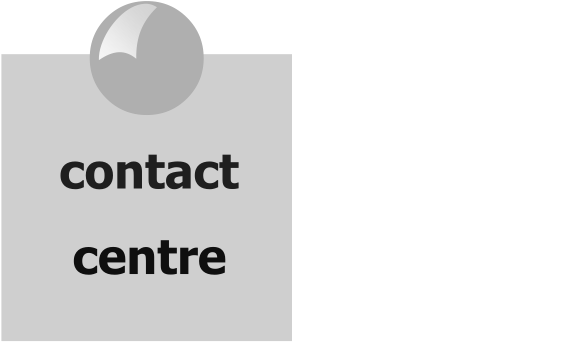CIOs are under pressure to deliver innovation while keeping the day-to-day operation running too.
How can they balance both?
CIOs are evolving to become more and more creative in their role.
The technology leader within the business is at a tipping point: constantly balancing the day-to-day minutiae of IT management with the bigger aims of business transformation is causing huge pressure for technology chiefs.
Should CIOs focus on keeping the lights on or should they instead concentrate on illuminating new opportunities for the business through the use of digital technology? Royal Mail CIO Catherine Doran recognises both the conundrum and the uneasy equilibrium.
“Technology now pervades all aspects of business and there are very few initiatives that can take flight without it, so you’re constantly balancing the tactical with the strategic and short term with long term goals,” says Doran, one of the UK’s most respected tech chiefs.
Doran’s comments form part of a report by market researcher Vanson Bourne that was completed on behalf of technology giant BT. The full report draws on the opinions of 955 IT decision makers globally, and ZDNet has been given access to the qualitative and quantitative results.
Managing the change in expectations is tough
More than eight in every ten (85 per cent) IT decision makers agree that the traditional CIO role is changing. The research confirms that the traditional, operationally focused IT director is on life support: CIOs that want to thrive in modern business must tip towards transformation.
Yet the research suggests this move towards constant change and creativity is far from straightforward. IT leaders are struggling under the weight of expectations from technology-savvy users, both inside and outside the organisation, who expect high-quality service and engagement.
Respondents cite challenges such as the changing demands of customers, the requirement for innovation, and the ever-increasing amount of data. “The consumerisation of IT and mobile technology has changed the speed at which CIOs are now expected to respond,” confirms Doran in the report.
IT leaders who are slow to react face further pressure. End users are now much more prepared to take technology decisions into their own hands. The cloud makes it easy for line-of-business employees to circumnavigate IT and buy services on-demand.
More than three quarters (76 per cent) of CIOs say departments within their own businesses are now sourcing and commissioning products with no input from the IT team. In total, the research found that as much as one quarter (25 per cent) of technology spending now takes place outside the IT department.
Picking up the slack is even harder
At this point, CIOs should be rubbing their hands with glee. The business wants an IT leader who is less concerned with day-to-day IT operations and more focused on creativity. Consumerisation and the rise of shadow IT should provide a means for the business to take more responsibility for IT implementation and an opportunity for CIOs to spend more time on innovation.
However, while the business might clamour for innovation, there is little evidence to suggest that a passing of accountability for IT management from CIOs to line-of-business employees is taking place. The report highlights how supposedly old school concerns – like downtime, network availability, and data recoverability – are still the issues upon which the performance of IT leaders are most likely to be judged.
The buck still stops with the CIO when email systems stop working and customers cannot phone through. Final accountability for information security also rests with the CIO, despite the rise in shadow IT. The report highlights how 93 per cent of businesses say their CIO is involved with ensuring data is stored, accessed, and edited appropriately.
The digital opportunity, in short, matters but CIOs will still be expected to direct a great deal of their attention towards operations. Almost three quarters (74 per cent) of IT decision makers agree that the CIO currently spends more time maintaining existing IT systems than searching for new solutions to business challenges.
As mentioned at the beginning, the need for CIOs to balance the day-to-day minutiae of IT management with the bigger aims of business transformation is a tough ask. What is more, evidence would seem to suggest that the confluence of new, consumer-led demands and old, operation-focused requirements is making a tough job tougher.
Taking business and IT by the scruff of the neck is the only option
There is, however, light at the end of the tunnel. Technology now pervades all aspects of business. And while end users can source their own IT, the wider organisation will still need someone special to oversee these choices, to ensure integration, and to find new creative solutions to business challenges.
For those IT leaders who grasp the opportunity, modern CIOs do seem to have greater standing and are now more influential. More importantly, and despite the fact that many IT leaders are still judged on technical factors, their performance is increasingly measured by business results.
Compared with two years ago, 81 per cent of IT decision makers believe CIOs now own more key business performance indicators, such as budget versus revenue growth, employee satisfaction, and the lowering of operational costs.
Sasol group CIO Alec Joannou says in the report that CIOs can now migrate from mere order takers to order makers by demonstrating how new technologies and innovations can drive the business and its shareholder value. His peers would seem to agree, with 62 per cent of IT decision makers saying the CIO now has greater opportunity for adding value to the business.
As Craig Charlton, CIO at De Beers, says in the report, the challenge for IT leaders is to find the sweet spot. He says a constant challenge for every CIO is negotiating the cultural disruption wrought by being able to buy everything as a service and the emergence of shadow IT. “If you don’t grab the opportunities that disruptive digital forces present, harness them, and communicate their impact on business models to the board, then someone else will,” says Charlton.
The message, then, is simple enough. The role of the CIO is changing and continues to evolve in relation to other senior executives, such as the CMO and CDO. A tipping point has been reached and successful CIOs must strive to demonstrate to their business peers how creative IT can help solve intractable business challenges.
But while focusing on the bright shine of innovation, CIOs still hold a broader responsibility for operational matters and they cannot afford – even in a digital age – to take their eyes off the duller light of day-to-day operational IT concerns.



Recent Comments